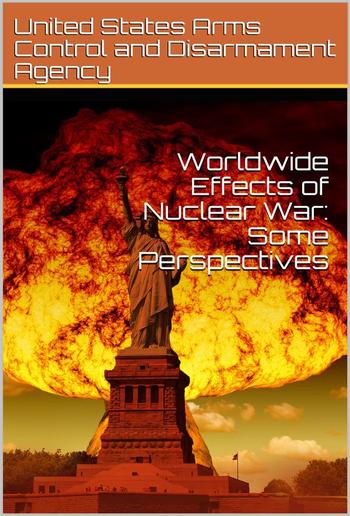
United States. Arms Control and Disarmament Agency - Worldwide Effects of Nuclear War: Some Perspectives
Worldwide Effects of Nuclear War: Some Perspectives
United States. Arms Control and Disarmament Agency
Description
It has now been two decades since the introduction of thermonuclear fusion weapons into the military inventories of the great powers, and more than a decade since the United States, Great Britain, and the Soviet Union ceased to test nuclear weapons in the atmosphere. Today our understanding of the technology of thermonuclear weapons seems highly advanced, but our knowledge of the physical and biological consequences of nuclear war is continuously evolving.
Only recently, new light was shed on the subject in a study which the Arms Control and Disarmament Agency had asked the National Academy of Sciences to undertake. Previous studies had tended to focus very largely on radioactive fallout from a nuclear war; an important aspect of this new study was its inquiry into all possible consequences, including the effects of large-scale nuclear detonations on the ozone layer which helps protect life on earth from the sun's ultraviolet radiations. Assuming a total detonation of 10,000 megatons--a large-scale but less than total nuclear "exchange," as one would say in the dehumanizing jargon of the strategists--it was concluded that as much as 30-70 percent of the ozone might be eliminated from the northern hemisphere (where a nuclear war would presumably take place) and as much as 20-40 percent from the southern hemisphere. Recovery would probably take about 3-10 years, but the Academy's study notes that long term global changes cannot be completely ruled out.
Strange though it might seem, the increased ultraviolet radiation could also be accompanied by a drop in the average temperature. The size of the change is open to question, but the largest changes would probably occur at the higher latitudes, where crop production and ecological balances are sensitively dependent on the number of frost-free days and other factors related to average temperature. The Academy's study concluded that ozone changes due to nuclear war might decrease global surface temperatures by only negligible amounts or by as much as a few degrees. To calibrate the significance of this, the study mentioned that a cooling of even 1 degree centigrade would eliminate commercial wheat growing in Canada.
Thus, the possibility of a serious increase in ultraviolet radiation has been added to widespread radioactive fallout as a fearsome consequence of the large-scale use of nuclear weapons. And it is likely that we must reckon with still other complex and subtle processes, global in scope, which could seriously threaten the health of distant populations in the event of an all-out nuclear war.
Much of our knowledge was thus gained by chance--a fact which should imbue us with humility as we contemplate the remaining uncertainties (as well as the certainties) about nuclear warfare. What we have learned enables us, nonetheless, to see more clearly. We know, for instance, that some of the earlier speculations about the after-effects of a global nuclear war were as far-fetched as they were horrifying--such as the idea that the worldwide accumulation of radioactive fallout would eliminate all life on the planet, or that it might produce a train of monstrous genetic mutations in all living things, making future life unrecognizable. And this accumulation of knowledge which enables us to rule out the more fanciful possibilities also allows us to reexamine, with some scientific rigor, other phenomena which could seriously affect the global environment and the populations of parti

